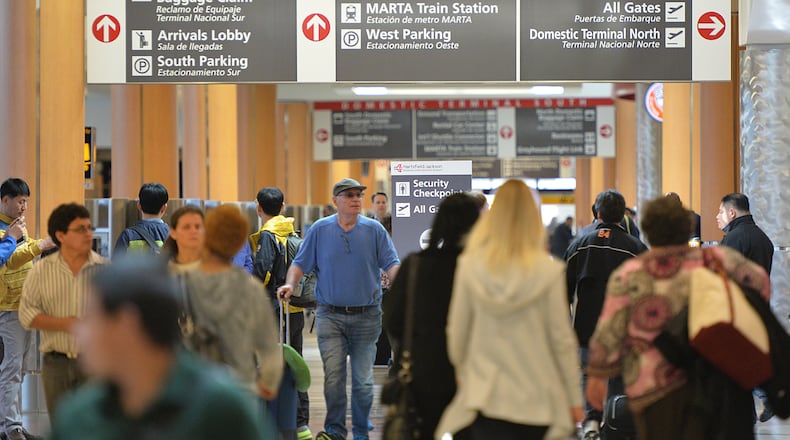AirTran frequent flier conversion to Southwest program
AirTran’s A+ Rewards program comes to an end Nov. 1.
Southwest will create a Rapid Rewards account for all AirTran frequent fliers who don’t already have one. AirTran A+ Rewards credits will be automatically converted to Southwest Rapid Rewards points at a ratio of 1 credit = 1,200 points.
The conversion process may take a couple of weeks, during which frequent fliers won’t be able to access their program activity. Southwest says it will notify members once the process is complete.
Also, all AirTran frequent fliers who had elite status expiring on or after Nov. 2 will get Rapid Reward A-List status through Dec. 31, 2015.
How Southwest’s Rapid Rewards program works
Southwest’s Rapid Rewards program, revamped in 2011, has no blackout dates and points don’t expire, although you have to earn points every 24 months to keep your account active.
Points earned depend on fare. Wanna Get Away fares earn 6 points per dollar; Anytime fares earn 10 points per dollar; Business Select fares earn 12 points per dollar.
Points required for award travel also depend on the fare for the flight you’re trying to book. A Wanna Get Away fare costs 70 points per dollar; an Anytime fare costs 100 points per dollar; a Business Select fare costs 120 points per dollar.
The program has no blackout dates and points don’t expire, though you have to earn points every 24 months to keep your account active.
How Delta’s SkyMiles program will work in 2015
Starting next year, the average Delta frequent flier will earn five miles for every dollar spent on a Delta flight. That means for a $300 fare, travelers will earn 1,500 miles.
But some other frequent fliers will earn more miles per dollar spent.
Those who use the Delta SkyMiles American Express credit card will earn seven miles for every dollar spent. And elite-level frequent flier members can earn anywhere from seven to 13 miles per dollar spent, depending on whether they are at silver, gold, platinum or diamond levels and if they have a Delta American Express card.
Starting next year, Delta will also have five mileage-redemption levels.
The minimum for domestic award tickets in Delta’s SkyMiles frequent flier program will remain 25,000 miles. But starting next year, other award levels are 35,000, 40,000, 50,000 or 65,000 miles.
In the new program, there are no blackout dates and miles still don’t expire.
Here’s an example of how Delta frequent fliers will earn miles starting next year:
ATLANTA TO NEW YORK JFK ROUNDTRIP ON A $300 FARE
OLD PROGRAM:
1,518 miles earned
NEW PROGRAM:
SkyMiles member: $300 x 5 = 1,500 miles earned
SkyMiles member using Delta SkyMiles American Express credit card: $300 x 7 = 2,100 miles earned
SkyMiles member at Diamond elite level with the Delta credit card: $300 x 13 = 3,900 miles earned
Atlanta frequent fliers, fasten your seatbelts for a big change in the mileage programs you’ve used for years.
At each of Atlanta’s two major carriers — AirTran Airways and Delta Air Lines — the frequent flier programs are undergoing transformations that will change the way you earn points for free flights.
AirTran’s frequent flier program has now disappeared, replaced Nov. 2 by Southwest Airlines’ program.
It’s one of the final steps in Southwest’s full takeover of the operations before the AirTran name completely disappears at the end of this year. That brings a close to the integration started back in 2011 when Southwest acquired AirTran for $1.4 billion.
Farewell to AirTran
While AirTran offered a credit for each flight segment, Southwest’s program is more complicated.
The Southwest Rapid Rewards program used to be very similar to AirTran’s, but a few years ago it shifted to a points system based on fare type and price to “better reward” members, according to a spokeswoman. Another key difference is that in Southwest’s program, points don’t expire.
But for some AirTran frequent fliers, it’s hard to let go.
AirTran’s program was “such a perfect business model for me,” said frequent flier Matt Curl, who lives in Lawrenceville. “They really rewarded you for domestic travel,” and he got upgraded to first class most of the time. But since the acquisition by Southwest, which does not have first class, Curl has started flying competitor Delta more often.
“Those of us who are AirTran people, we loved the service, we loved everything about AirTran, and it’s gone,” Curl said. “We have to have a little burial ceremony and move on. People get overly connected to their airline for some reason.”
Delta’s SkyMiles shift
Another major shift for Atlanta travelers comes Jan. 1.
That’s when Delta will make a historic change to its SkyMiles program, awarding free flights based on dollars spent rather than miles flown. Competitor United Airlines is making a similar move.
The impending change announced early this year marks a significant difference in how the frequent flier program works, after more than 30 years of counting miles.
Delta’s SkyMiles program, which has 92 million members, will ultimately give more miles to frequent fliers who take high-fare flights and fewer miles to those who bargain hunt and find cheap fares.
Delta spokesman Anthony Black said the change is intended to “better reward our premium customers.”
Driven by dollars
With Delta and AirTran accounting for more than 90 percent of the traffic at Hartsfield-Jackson International Airport, the changes at both mean Atlanta frequent fliers are in for a nearly across-the-board transformation of programs.
It’s all driven by the airlines’ relentless pursuit of higher revenue. Both Delta’s new program and Southwest’s favor business travelers over those who fly once or twice a year for vacations. They give bigger benefits to those who pay the highest fares and book last-minute trips at top dollar.
With Delta’s program changes, “there will be winners and losers,” said Tim Winship, publisher of frequentflier.com. For infrequent travelers who fly once in a while for vacations or to visit family, the frequent flier program is going to “become much less of a factor … You’re going to be better served by making your choice of airline based on price and convenience and letting the frequent flier miles fall where they may.”
But there is a benefit Delta has promised that will benefit all, even those who aren’t jet-setters. Black said that with the changes to the program, “we are making it easier for every customer to redeem more of their miles” at the basic 25,000 level.
That’s aimed at addressing the biggest frustration frequent fliers have experienced in recent years: difficulty redeeming miles for a free flight. Millions of members have jockeyed for a scarce number of seats. Winship said that the bottleneck should “ease up somewhat, with a considerable number of travelers simply being kind of eased out of the system.”
Delta vs Southwest
Even though the changes have been in the works for months, the new programs are more complex, and some travelers will face a learning curve after the new rules take effect.
“I have to spend the time to figure out what the Southwest program has,” Curl said. “The No. 1 thing for me is still going to be a good price … What I’m not going to do is I’m not going to pay that $900 ticket for Delta just because of my frequent flier system.”
In the past, it was relatively easy for Atlanta frequent fliers to figure out whether they preferred Delta’s miles-based program or AirTran’s credit-for-flight segment system.
But now, travelers on Southwest will earn points based on the type of ticket and the price, and those on Delta will earn miles based on the price, their elite level and whether they have a Delta American Express card.
“It certainly complicates any sort of apples to apples comparison,” Winship said.
He said the new programs should prompt a shift to more use of credit cards that give out points that can be used for travel on any airline, rather than one linked to a specific carrier.
But some travelers may continue to focus on collecting their airline’s frequent flier points “before they fully realize, ‘Gee, this just isn’t really working for me.’ ”
The allure of a free flight
The goal of frequent flier programs was always to reward airlines’ most profitable customers, Winship said. But airlines used miles or flight segments as a measure for that since technology hadn’t yet advanced to the point of being able to track the actual revenue from each customer. In the intervening 30-plus years, tens of millions of travelers have been able to use those miles for free flights.
In an era when travel has become less fun and more frustration, it seems the joy of getting a free flight is about to become a bit more rare for the masses.
“These programs are going to be more the domain of frequent business travelers and less the domain of infrequent leisure travelers,” he said.
But the enthusiasm for frequent flier awards will likely live on, even if they’re less attainable for some.
“The prospect of a free flight has always been a powerful motivator,” Winship said. “For whatever psychological reason, it seems that a free trip trumps an equivalently valued piece of merchandise or even an equivalent amount of cash. And I don’t expect that to change.”
About the Author
Keep Reading
The Latest
Featured



